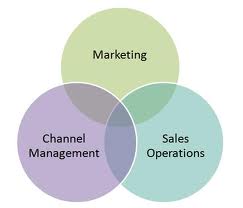Channel selling—that is selling products/services through a network of distributors or resellers—is a very effective sales model, especially in the B2B space. Channel marketing is not easy because unlike direct marketing, channel marketing must be addressed to both channel partners and end user customers. As a predominantly B2B agency (with a specialty in technology), most of our clients employ the channel sales model and I want to share some tips to help you develop your own channel marketing strategy.
Here are 5 Tips for Developing a Successful Channel Marketing Strategy
- Time it right: You know you are in need of a channel strategy (and some dedicated staffers) when your P&L is starting to see double digit revenue contributions coming from your channel partners, distributors or other 3rd parties, rather than your own direct sales force—and/or when your own dedicated sales force can’t keep up with the “opportunities in the marketplace.”
- Voice/Tone/audience: As I said before, it is critical to speak your customers’ language—that is, to employ the right tone, voice, and of course, relevant value propositions and marketing messages that resonate with the people you most want to connect with. In this case, channel partners. I cannot tell you how many times I have seen great companies use their own end user marketing materials with their prospective channel partners with little success. This method doesn’t work because the channel partner is going to want at least a co-branded marketing situation—if they aren’t part of the sales mix, how are they to add value with the customer? Why should they bother if they aren’t getting any credit?
Also, the reseller doesn’t have time to create their own materials about YOU—they want you to show them how easy it is going to be to sell your solutions and make money in the process. They need your help understanding what are the lucrative markets, what those markets have in terms of pain points and buying drivers, their overall needs and how “to tell the story” (how your products or solutions solve these problems)— as well as how to profile and find leads. They don’t have the time to do it all themselves—you need to make it easy.
- Remember you are probably not their exclusive line: Another thing to remember is that most resellers and distributors represent MANY brands, products and solutions. If you think because you sent them a sales presentation they will automatically sell your offerings, and you’ve done your job, think again. They likely have at least 1-2 other manufacturers in your sector and dozens of others in other sectors to remember and sell. He who makes it easiest to convert sales gets the channel partners’ share of mind. If you don’t make it easy, you’ll be left on the proverbial shelf.
- Content: I like to think of content and communication for the channel as a two-part process: You need communications for the channel partner and for the end user customers. You need to arm your channel partners with content and selling tools that make them smarter about the industry they are selling into, more prepared to have a conversation about your offerings with the prospect and how your offerings can solve the prospective customer’s needs/pain points—with all of the incentives and fiscal advantages of working with you. You also need communications for the end users that showcase the value of working with your resellers and buying your specific offering(s)—a co-branded value proposition illustrating why 1+1=3.
- Make it easy to engage with you and sell your offerings: Think about your engagement model as if you were going through the process yourself: How easy is it for you to find you and your program? Compare you with your closest competitor? Sign up to be a reseller? What is accessible on your public website and what is protected behind a firewall/password? Remember, the engagement process is like making a purchase decision for that reseller/channel partner. If you don’t make it easy and enticing—they won’t bother!
When you are selling your services/products through channel partners, remember, you are really making two sales. The first is to persuade the organization to partner with you, and the second is to the end user customers. A good channel marketing strategy needs to address the needs of both of these stakeholder groups or you simply won’t get as many sales as you should.

